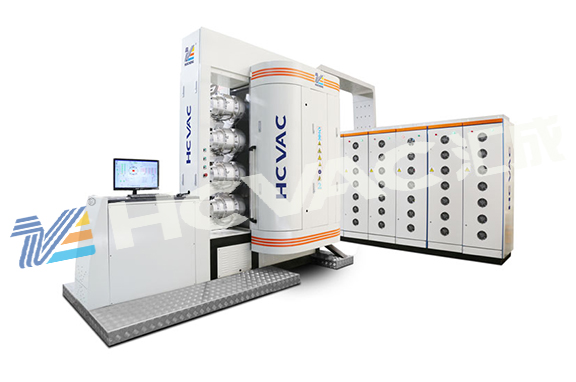Many daily necessities in our daily lives use vacuum coating technology, which is coated with a layer of film, such as tableware, glasses, phone covers, phone lenses, clothes buttons, bag zippers, etc. All have undergone a layer of film coating. It not only changes the appearance of the product, but also changes its service life and function. Many people are curious about the coating technology of vacuum coating machines and have many doubts, Below, the vacuum editor will provide a detailed introduction to the coating process of the vacuum coating machine and its material requirements for the heat source.

Vacuum coating is a technique for producing thin film materials. The atoms of the material in the vacuum chamber are separated from the heating source and hit onto the surface of the coated object. This technology is used to produce aluminum coating on laser records (optical discs) and metal coating on printed circuit boards using masks.
What are the material requirements for the evaporation source in vacuum coating?
Usually, the material and shape of the evaporation source should be considered for the evaporation source. The general requirements for the evaporation source material are:
(1) High melting point. Because the evaporation temperature of the evaporating material (a temperature with an equilibrium vapor pressure of 1.3Pa) is mostly between 1000~2000 ℃, the melting point of the evaporating source material should be higher than this temperature.
(2) Low equilibrium steam pressure. This is mainly to prevent or reduce the evaporation of source materials at high temperatures, which become impurities and enter the evaporation coating layer. Only when the equilibrium pressure of the evaporation source material is low enough can the minimum self evaporation capacity be ensured during evaporation, which will not affect the system vacuum and contaminate the film layer. In order to minimize the amount of evaporation by the evaporation source material, when selecting the evaporation temperature and evaporation source material, the evaporation temperature of the material should be lower than 1.3 when the equilibrium pressure of the evaporation source material is 1.3 × The preparation of high-quality thin films at 10-6Pa can be achieved by comparing with 1.3 × The temperature corresponding to 10-3Pa.
(3) Chemical performance is stable and should not react with evaporated materials at high temperatures. At high temperatures, certain evaporative source materials may react and diffuse with evaporative materials to form compounds and alloys. Especially when forming a low eutectic alloy evaporation source, it is easy to burn off. For example, at high temperatures, tantalum and gold form alloys, while aluminum, iron, nickel, and cobalt also form alloys with vaporizing source materials such as tungsten, molybdenum, and tantalum. Tungsten can also react with water or oxygen to form volatile oxides such as WO, WO2, or WO3; Molybdenum can also react with water or oxygen to form volatile MoO3, etc. Therefore, materials that do not react with the coating material or form alloys should be selected as the evaporation source material for this material.
Materials used as evaporation sources for vacuum coating machines must possess properties such as high melting point, low volatility, and low brittleness after high-temperature cooling. The commonly used linear evaporation source should be able to wet with the evaporated metal, with a melting point much higher than the evaporation temperature of the metal to be plated, and not react with the metal to form an alloy.



